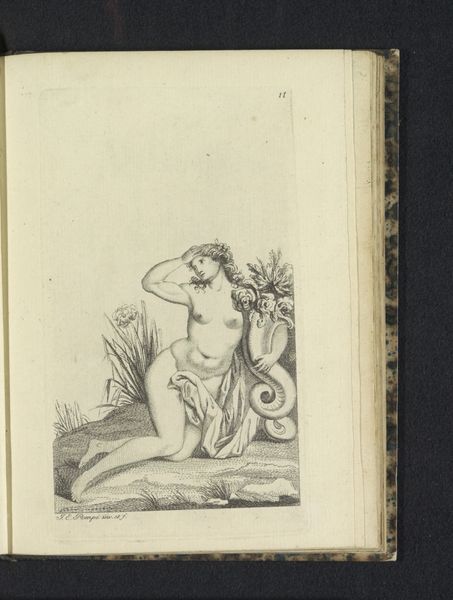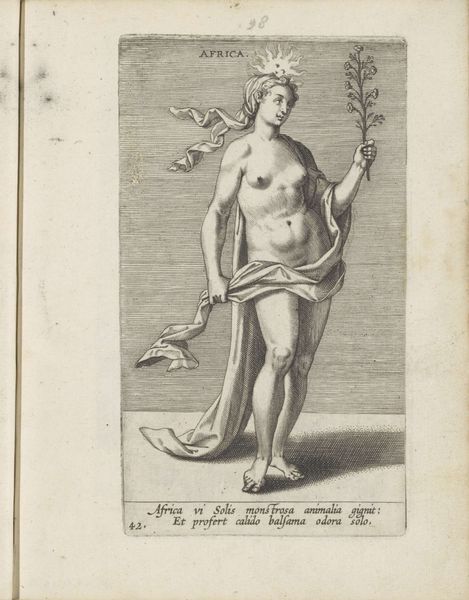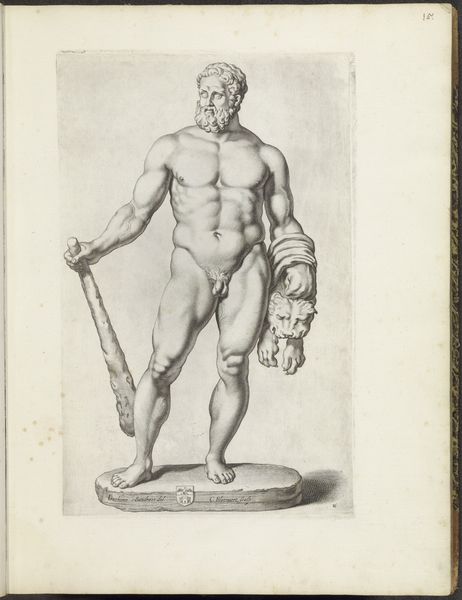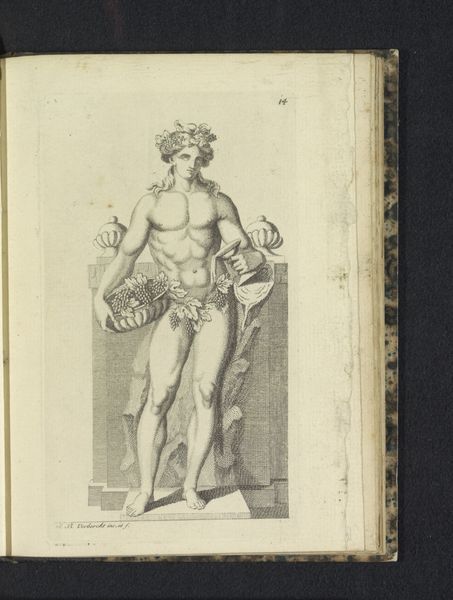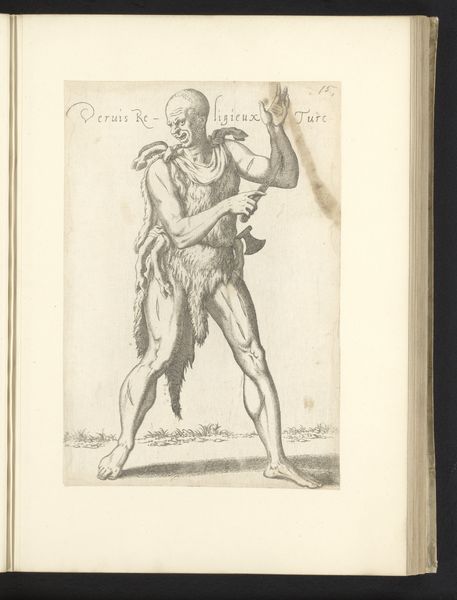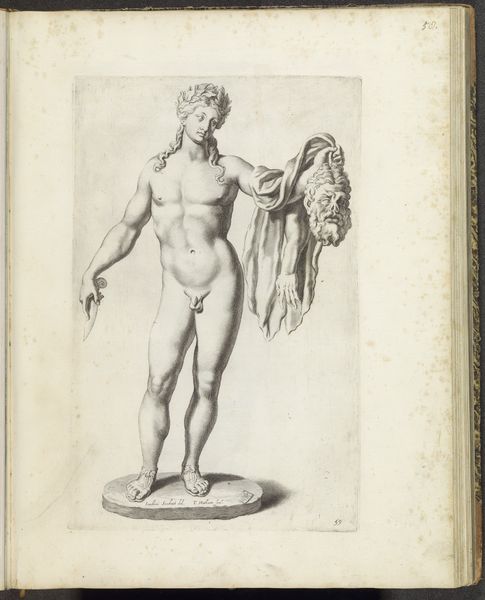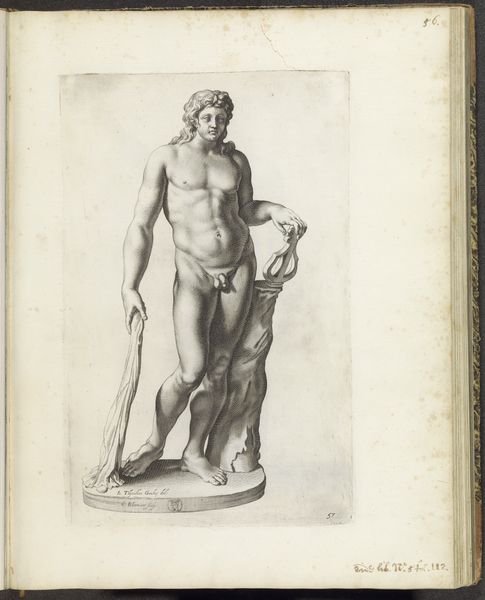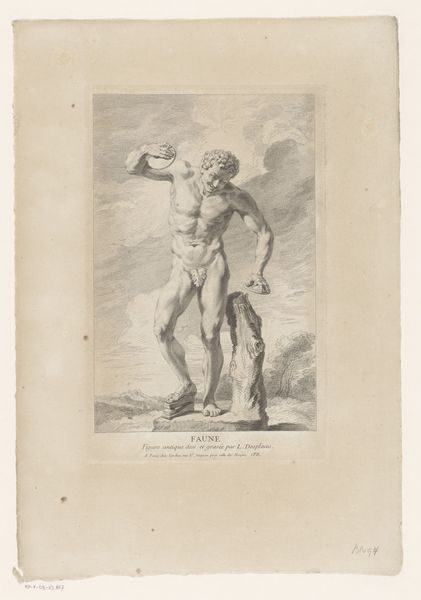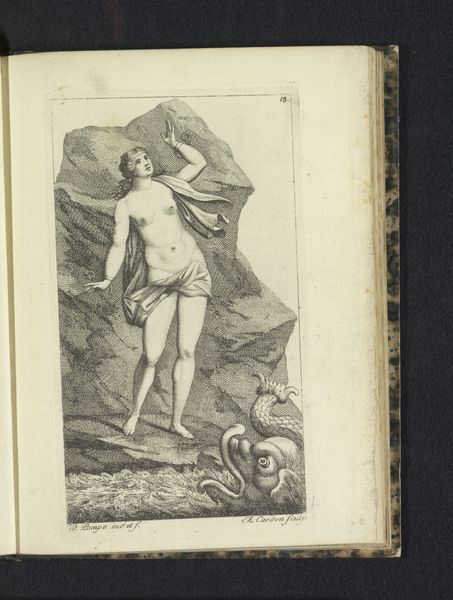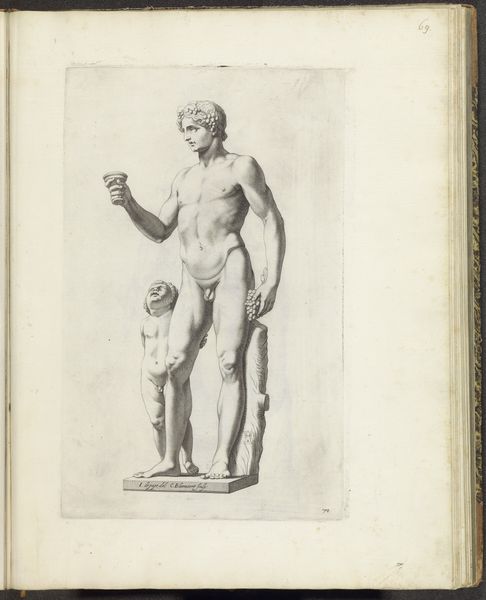
drawing, ink, pen
#
portrait
#
drawing
#
pen illustration
#
figuration
#
11_renaissance
#
ink
#
pen
#
academic-art
#
nude
Dimensions: height 248 mm, width 168 mm
Copyright: Rijks Museum: Open Domain
Editor: We're looking at a drawing from between 1555 and 1568, titled "North African Islamic Slave Woman in Algiers," attributed to Léon Davent. It’s a pen and ink piece. The figure's posture suggests movement, a certain precariousness, yet the floral detail she carries adds a touch of delicate serenity. What strikes you most about this image? Curator: Precariousness is the perfect word, don't you think? Here is this lone figure, clearly labeled as enslaved. You can sense Davent grappling with his role, right? This wasn't just a pretty picture; it was observation masquerading as representation. The so-called ‘exotic’ woman becomes a site of tension, a reminder of the voyeurism inherent in the colonial gaze. That flower becomes an incredibly fragile symbol, juxtaposed with her enslavement. Makes you wonder about whose story we're *really* seeing, doesn’t it? Editor: It does make you wonder. The woman's gaze isn't defiant, more...resigned? Do you think that's a fair reading? Curator: Resigned is close, I think. What if we saw her gaze not as resignation but as a kind of fierce interiority? She’s the subject of observation, but her thoughts remain stubbornly, beautifully her own. This little drawing offers a glimpse, not a full portrait, and what is revealed and what remains hidden is utterly captivating. Editor: That's a powerful reading. It makes me rethink my initial interpretation. The detail suggests Davent wasn’t indifferent, or, at least, wasn’t presenting one. Curator: Exactly! It isn't clear, that’s for sure. What can be said, I guess, is the ambiguity creates a richer, more uncomfortable, and, ultimately, more thought-provoking image. Editor: Absolutely. I'm definitely walking away with a different perspective on this piece now.
Comments
No comments
Be the first to comment and join the conversation on the ultimate creative platform.
